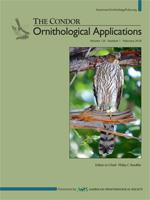Globally, riparian ecosystems are in decline due to anthropogenic modifications, including damming. Reduced frequency and altered timing of flood events decreases sandbar deposition, which reduces habitat for sandbar-breeding birds, including the threatened Piping Plover (Charadrius melodus). In response to limited breeding habitat and small populations, the U.S. Army Corps of Engineers constructed 255 ha of sandbar habitat on the Missouri River, USA, from 2004 to 2009. During the breeding seasons of 2010 and 2011, historically high flows resulted in the creation of 1,046 ha of suitable sandbar habitat on the Missouri River. We compared the demographic responses of Piping Plovers to this anthropogenic and natural habitat creation. We found that demographic parameters, including nest success (x̄preflood = 0.45 ± 0.02 SE vs. x̄postflood = 0.74 ± 0.02 SE), prefledging chick survival (x̄preflood = 0.39 ± 0.09 SE vs. x̄postflood = 0.65 ± 0.03 SE), and hatch-year survival (x̄preflood = 0.16 ± 0.03 SE vs. x̄postflood = 0.46 ± 0.03 SE), were consistently higher on the flood-created habitat than on the engineered habitat, leading to population growth after the flood. These differences were related to increased sandbar habitat, low nesting densities, and decreased nest and chick predation. As ecosystems are increasingly altered, ecologists seldom have the opportunity to make appropriate comparisons between managed and natural ecosystem processes. Our results suggest that management intervention may not be an appropriate substitute for natural ecosystem processes in riparian ecosystems.
How to translate text using browser tools
10 January 2018
Demographic response of Piping Plovers suggests that engineered habitat restoration is no match for natural riverine processes
Kelsi L. Hunt,
James D. Fraser,
Meryl J. Friedrich,
Sarah M. Karpanty,
Daniel H. Catlin

The Condor
Vol. 120 • No. 1
February 2018
Vol. 120 • No. 1
February 2018
Charadrius melodus
flooding
habitat creation
Missouri River
Piping Plover
riparian ecosystem




